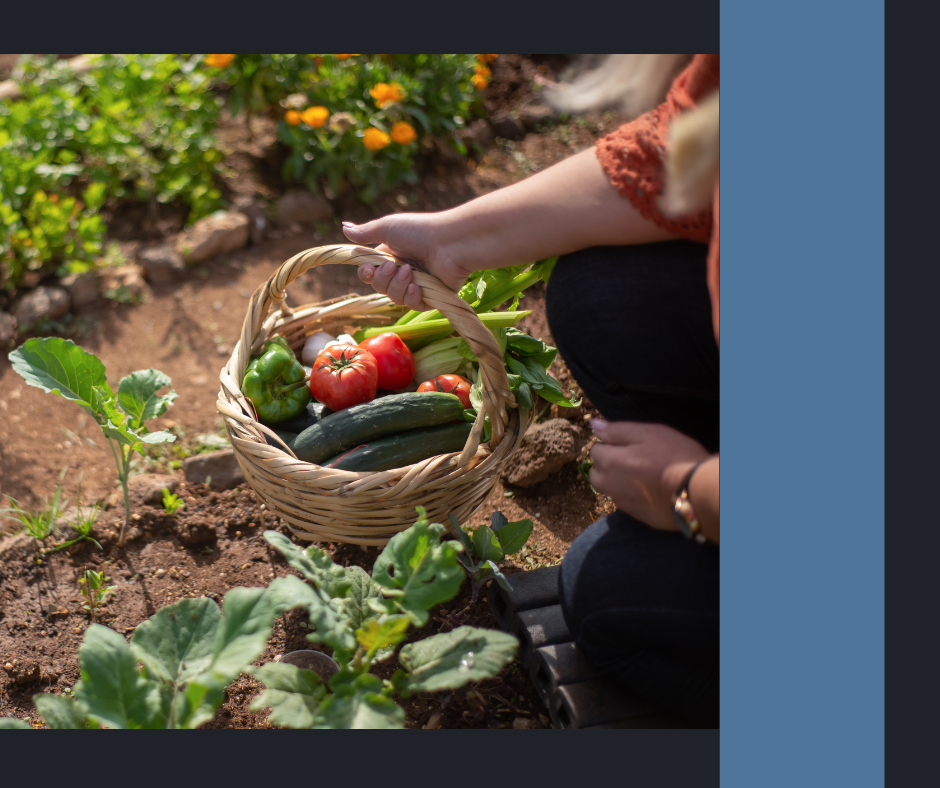
How to Start a Garden: A Beginner’s Guide to Growing Your Own Food
Share
Starting a garden is one of the most rewarding ways to provide fresh, healthy food for your family. Whether you have a large backyard or just a small patio, you can grow fruits, vegetables, and herbs to supplement your meals. Gardening doesn’t have to be complicated—by following a few simple steps, you can set yourself up for a successful growing season.
Step 1: Choose Your Gardening Space
Before you start planting, assess your available space. Here are some options based on different living situations:
Backyard Garden – Ideal for in-ground or raised bed gardening.
Small Spaces – Container gardening works well on patios, balconies, or small yards. Check out this article specifically for container gardening.
Indoor Gardening – Grow herbs, microgreens, and small vegetables in pots or hydroponic systems. Check out this article to learn how to grow food indoors.
Consider Sunlight and Water - Most vegetables need at least 6-8 hours of direct sunlight per day. Observe your space to determine which areas get the most sun. Also, make sure you have easy access to water, as consistent watering is key to a thriving garden.
Step 2: Decide What to Grow
Start with plants that are easy to grow and match your local climate. Here are some beginner-friendly options:
Vegetables:
Lettuce & spinach – Fast-growing and can be harvested multiple times.
Tomatoes – Require support but produce abundantly.
Carrots & radishes – Grow well in loose soil and containers.
Peppers – Thrive in warm weather and are great for containers.
Zucchini – High-yield plant that is easy to grow.
Herbs:
Basil – Great for cooking and grows well in pots.
Parsley – Hardy and can grow year-round in some climates.
Cilantro – Grows quickly, but does best in cooler weather. It bolts in hot weather.
Thyme & oregano – Perennial herbs that return each year.
Step 3: Prepare Your Soil
Healthy soil is the foundation of a successful garden. If you’re growing in the ground or raised beds, test your soil’s pH and nutrient levels with a soil test kit.
Improving Your Soil:
Add compost – Boosts nutrients and improves soil structure.
Use mulch – Helps retain moisture and suppress weeds.
Loosen compacted soil – Helps roots grow deeper.
For container gardens, choose a high-quality potting mix that drains well and retains nutrients.
Step 4: Planting Your Garden
Direct Seeding vs. Transplants
Direct Seeding – Some plants (carrots, radishes, beans) do best when seeds are sown directly into the soil.
Transplants – Crops like tomatoes, peppers, and herbs often start as seedlings indoors or purchased from a nursery. Once they have grown into small plants called "starts" they can be transplanted, or removed from their started pot into the garden outside. Be sure to "harden" your starts before planting them outside. This means putting them outside for short periods at a time to get them use to being outside a week or so in advance of planting them in the garden.
Planting Tips:
Follow spacing recommendations on seed packets or plant tags.
Plant at the right depth to ensure healthy germination.
Water immediately after planting to help seeds settle in.
Step 5: Watering and Care
Water consistently – Most vegetables need about 1 inch of water per week. Early morning watering is best.
Weed regularly – Mulching helps reduce weeds and retain moisture.
Fertilize as needed – Organic compost or liquid fertilizers help plants grow strong.
Monitor for pests – Check leaves for damage and use natural pest control methods when necessary.
Step 6: Harvesting Your Produce
One of the most rewarding parts of gardening is enjoying the fruits (and vegetables) of your labor! Harvesting regularly encourages plants to produce more.
Lettuce & spinach – Pick leaves from the outside and let the plant continue growing.
Tomatoes & peppers – Harvest when they reach full color and are firm.
Zucchini – Pick when small for the best flavor.
Carrots & radishes – Gently pull when they reach their expected size.
Bonus: Keeping Your Garden Thriving
- Keep a garden journal – Track what works and what doesn’t each season.
- Rotate crops – Prevents soil depletion and reduces pests.
- Extend the growing season – Use row covers or cold frames for fall and winter gardening.
Starting a garden is a learning experience, but with patience and care, you’ll enjoy fresh, homegrown food in no time. Whether you’re growing a few herbs on a windowsill or filling raised beds with vegetables, every step toward growing your own food is a step toward greater self-sufficiency.
Check out this article to learn more about growing fresh food indoors.
Check out this article to learn about container gardening.
Check out this article to learn about how to preserve your food after you grow it.
Check out this article to learn about foraging and edible plants.
Check out this article to learn about herbs to grow in your garden for health and flavor.
Check out this article to learn the best vegetables for seed saving.
Check out this article to learn the best storage food to grow in your garden.
